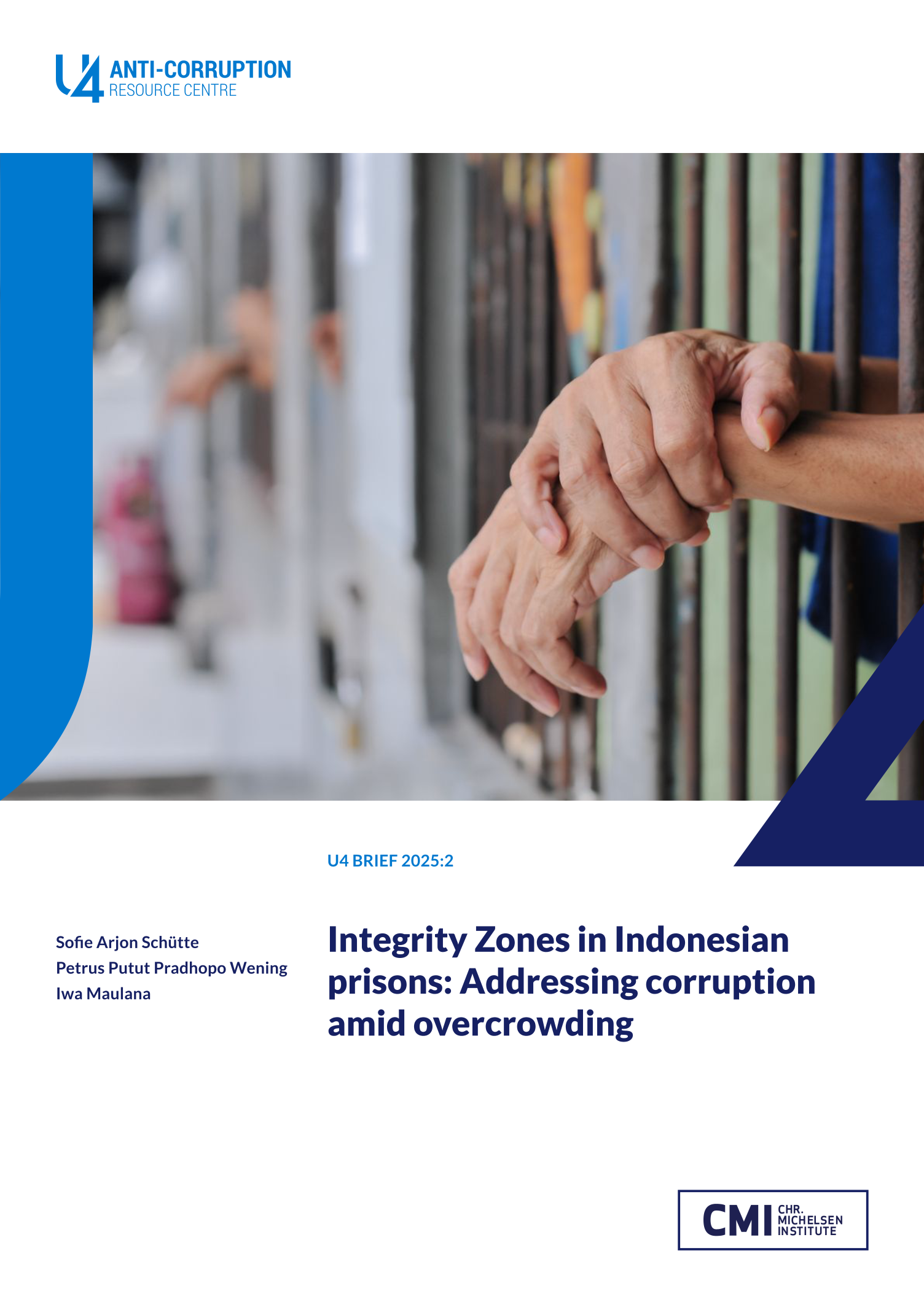Main points
- Severe overcrowding in prisons: As of December 2024, Indonesia’s prison population was 273,495, nearly double the system’s capacity. Some prisons operated at 300% to 800% capacity, leading to poor conditions and increased corruption risks.
- Drivers of corruption and overcrowding: Harsh sentencing laws, excessive use of pre-trial detention, and weak legal aid systems contribute to overcrowding and bribery opportunities, as detainees often pay to receive reduced charges or better conditions.
- Corruption risks: In 2018 the Indonesian Corruption Eradication Commission (KPK) identified weaknesses in the system, including sentence overstays that aggravate overcrowding, weak oversight of remissions, poor placement of prisoners, data management vulnerabilities, and corruption risks in food supply procurement.
- Bureaucratic reforms and Integrity Zones: Indonesia introduced Integrity Zones in prisons to reduce corruption and improve service delivery, with 128 prison units certified as corruption-free (WBK) or service-oriented (WBBM). Various digital tools and procedural innovations have emerged to address corruption and inefficiencies, but there is a need for independent monitoring and evaluation along with standardisation of effective measures across prisons.
- Structural and policy reforms: A newly established Ministry of Immigration and Corrections in late 2024 brought structural changes, including a new directorate dedicated to internal compliance. There are ongoing efforts to introduce non-custodial sentencing and to reform pre-trial detention policies to reduce overcrowding.
- Greater transparency and oversight needed: The study recommends increased transparency in identifying and monitoring corruption risks in prisons. This should include collaboration with independent monitoring bodies, especially as government budget cuts could reduce onsite monitoring.



